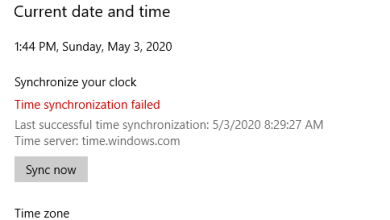How to Fix ‘Please wait for the gpsvc’ Error in Windows?
GPSVC, or Group Policy Client, is a background service that manages settings applied through the Group Policy Editor. When the user shuts down, signs in, or even signs out, the GPSVC service activates in the background to apply the Group Policy changes.
When GPSVC does not respond, Windows displays the ‘Please Wait for the GPSVC’ message. There are multiple reasons for GPSVC not responding. However, it often happens when the GPSVC.DLL file becomes corrupted or misplaced. To fix this issue, you will need to follow all the methods listed in this article.
1. Restart your system.
If GPSVC has not started when you turn on your computer due to an improper shutdown or other reasons, you will probably face this issue.
If that’s the case, you will need to restart your laptop or computer. Restarting the system can be helpful in some scenarios, as it restarts essential Windows services, which often helps fix temporary errors and bugs. You can usually restart if you are able to use your keyboard, but if not, try to force-restart your system.
To normal restart your system:
- Press Ctrl + Alt + Delete on your keyboard and click the Power button in the bottom right corner.
- Now select Shutdown from the power options.
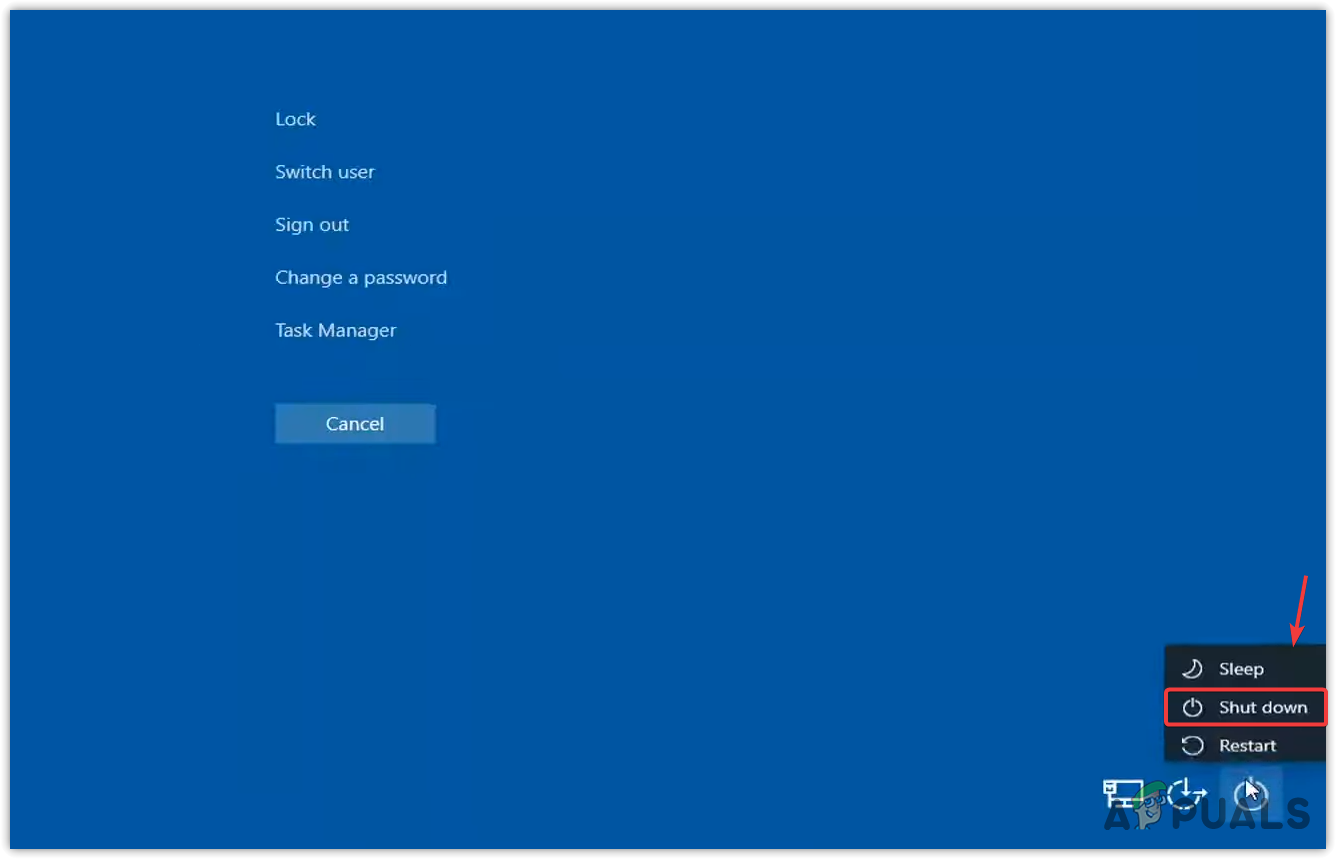
- Once done, simply turn on your computer and see if the error persists or not.
To force restart your system:
- Hold the Power button until your computer shuts down.
- Once completed, wait for several seconds and then press the power button again to turn it on.
- Additionally, if you have a laptop, remove the battery as well. Then, reconnect the battery to turn on the laptop.
- Once complete, check whether this error has been fixed or not.
2. Restart the GPSVC service.
If restarting the system fails to fix this error, you may need to restart the GPSVC service manually by navigating to the Services window.
It is possible that a third-party application disables the GPSVC service, which is why it did not start when you restarted your system using the first method. To restart the GPSVC service, follow these steps:
- To restart the GPSVC service, press the Ctrl + Alt + Delete keys.
- Click on Task Manager to open it.

- Click Run new task if you have Windows 11. Otherwise, click File > Run new task.
- Enter ‘services.msc‘ and click ‘OK‘ to navigate to the Services window.

- Find the service with the name Group Policy Client.
- Then, right-click on it to select Properties.

- Once you open its properties, change the startup type from Manual to Automatic.
- Click Apply, then click Start if the service is not running.

- Once done, close the windows and see if the error persists.
3. Repair the GPSVC DLL file.
When Windows fails to receive a response from the GPSVC.DLL file, it displays ‘Please Wait for the GPSVC.’ This mainly occurs when the GPSVC.DLL file becomes corrupted. Therefore, in this method, we will attempt to repair it using the System File Checker utility.
System File Checker, or SFC, is a command-line utility used to repair or restore files located in the System32 folder. When you execute the SFC command, it verifies all the protected system files and replaces any corrupted files from the cache folder located in %WinDir%\System32\dllcache.
To execute this command, follow these steps:
- Open Task Manager by pressing Ctrl + Alt + Delete and clicking the Task Manager option.
- Click Run new task from the top. If you have Windows 10, click File, then click Run new task.
- Tick Create this task with administrator privileges, then type cmd and click OK to open the Command Prompt.
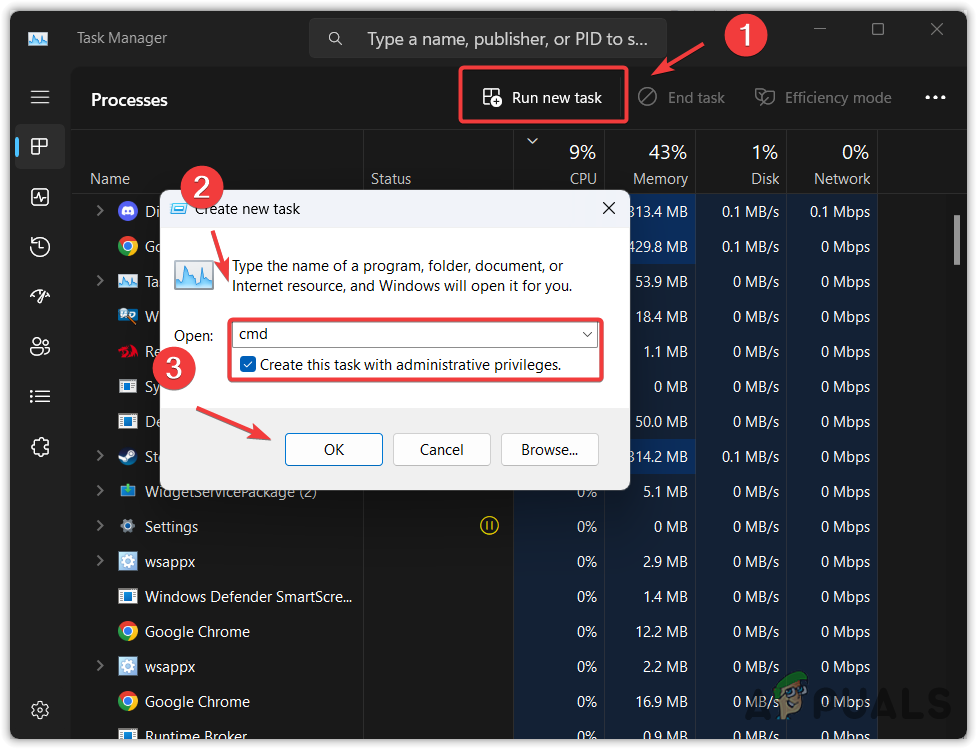
- Once completed, type ‘sfc /scannow‘ and press Enter.

- Now wait for the command to be executed.
- Once completed, restart your computer and check the results.
4. Download and replace the GPSVC.dll file.
If the error still persists, you can try downloading the GPSVC.DLL file from the internet. This method works in most scenarios where the DLL file becomes corrupted. After downloading, you will have to replace the corrupted DLL file with the new one. To do so, follow the instructions.
4.1 Create a User Account.
- To create an account, you will need to access the command prompt. To do this, simply press Ctrl + Alt + Delete keys simultaneously.
- Select Task Manager from the options. Click “Run new task” at the top. Then, check “Create this task with administrator privileges,” type “cmd,” and click “OK.

- Once you have opened the command prompt, type the following command to create an account.
net user /add [*username] [password]
Password is optional. You can leave it.
- Press Enter, then press Ctrl + Alt + Delete and select ‘Switch User.’ After that, choose a new user account to sign in.
4.2 Download the GPSVC file.
- Download the GPSVC.DLL file from the link according to your operating system’s architecture.
- To check your OS architecture, press the Win + R keys simultaneously.
- Enter msinfo32 in the box and click OK
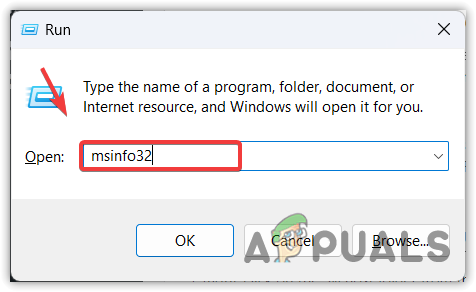 here; check the System Type,
here; check the System Type, Then go back to the link and download the DLL file according to it.
Then go back to the link and download the DLL file according to it.

- Once it is downloaded, extract the folder using WinRAR or 7-Zip and navigate to it.

- Now copy the GPSVC.DLL file and go to WindowsC:\Windows\System32.

- Paste the DLL file here and select Replace this file in the destination.
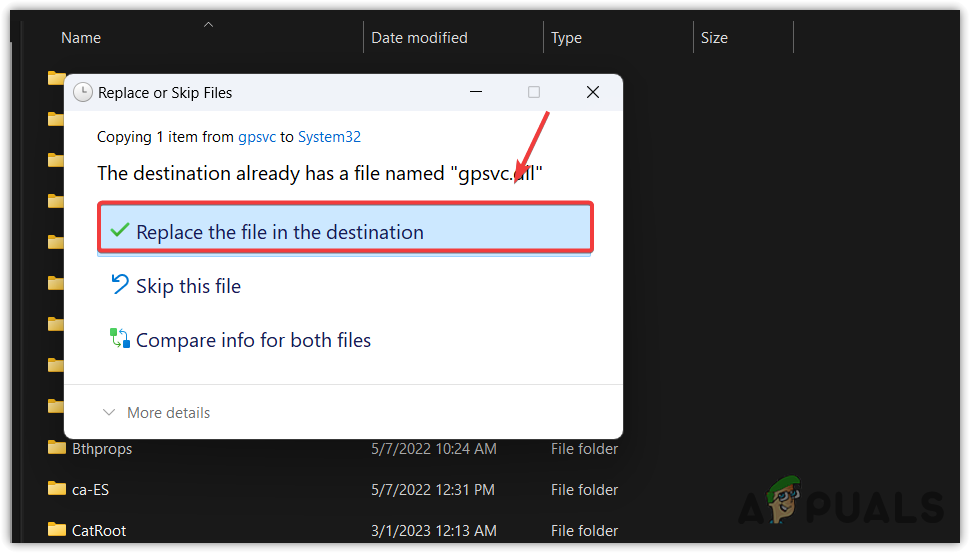
- Once completed, restart your computer and sign in with the account displaying this error message.
5. Configure the GPSVC registry file.
If the GPSVC registry keys are missing or set incorrectly, they can lead you to this error. It is possible that your registry keys have been changed after a faulty Windows update or as a result of using third-party software. In this case, you can try configuring registry entries for the GPSVC using the following steps:
- Navigate to the Task Manager by pressing Ctrl + Alt + Delete and selecting Task Manager.
- Once you open the Task Manager, either click “Run new task” from the top or click “File > Run new task” if you have Windows 10.
- Type ‘regedit‘, check ‘Create this task with administrator privileges‘, and then click ‘OK‘ to open the Registry Editor.
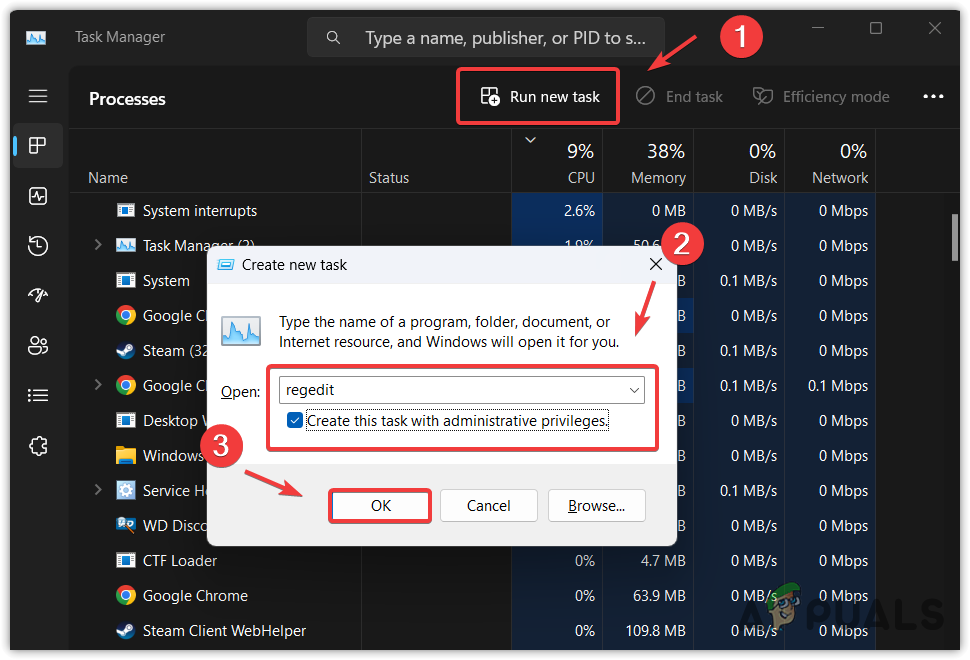
- Now go to the following directory using the left sidebar.
Computer\HKEY_LOCAL_MACHINE\SOFTWARE\Microsoft\Windows NT\CurrentVersion\Svchost
- Right-click on the Svchost folder from the left sidebar, hover New and select Key.
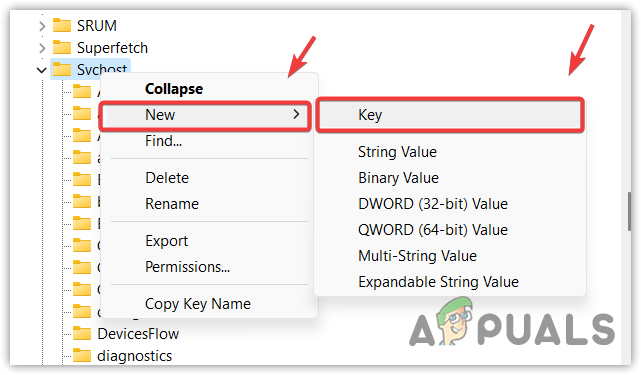
- Name it GPSvcGroup. Now on the right side, you will have to create two different key values.
- Right-click the empty space, hover over New, select DWORD (32-bit Value), and name it AuthenticationCapabilities.

- Double-click on it, select Decimal from the left pane and type 12320.
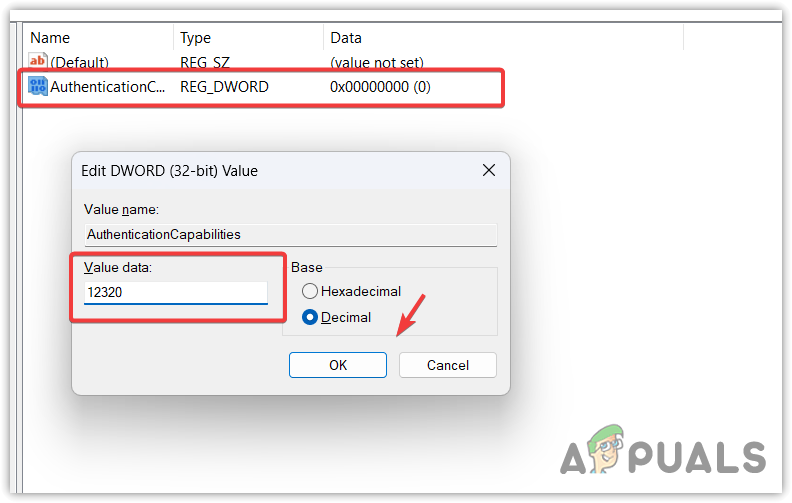
- Once done, click OK. Now, create another key, hover over “New,” and select “DWORD (32-bit Value).” Name it CoInitializeSecurityParam.
- Double-click on it, set the Value data to 1, and click OK.

- Once everything is done, close the registry editor.
- Press Ctrl + Alt + Delete, click the Power button, and select Restart. If the issue persists, follow the final two solutions to fix this error.

6. Utilize a System Restore utility.
Since GPSVC.DLL is one of the critical system files, we can easily restore it by using the System Restore utility. System Restore is a troubleshooting utility that requires a restore point created when Windows is working properly. Basically, it takes a snapshot of crucial system files, including drivers and registry files. So, when something bad happens, you will be able to restore to the previous state.
To do so, follow these steps:
- Press the Ctrl + Alt + Delete keys, then click the Power button, and while holding Shift, click Restart. This will open the Windows Recovery Environment.
- Now go to Troubleshoot > Advanced options.
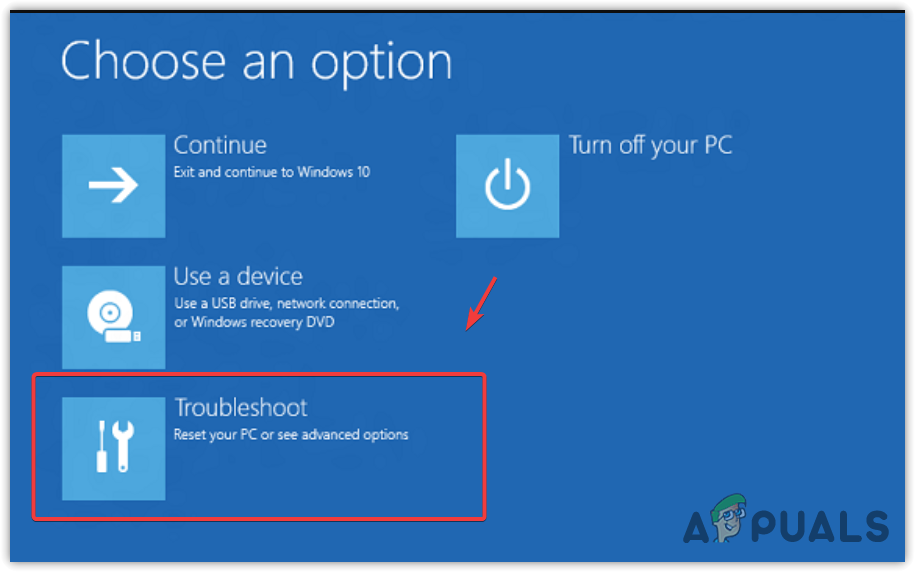
- From the advanced options menu, select System Restore, and then wait for your computer to restart.
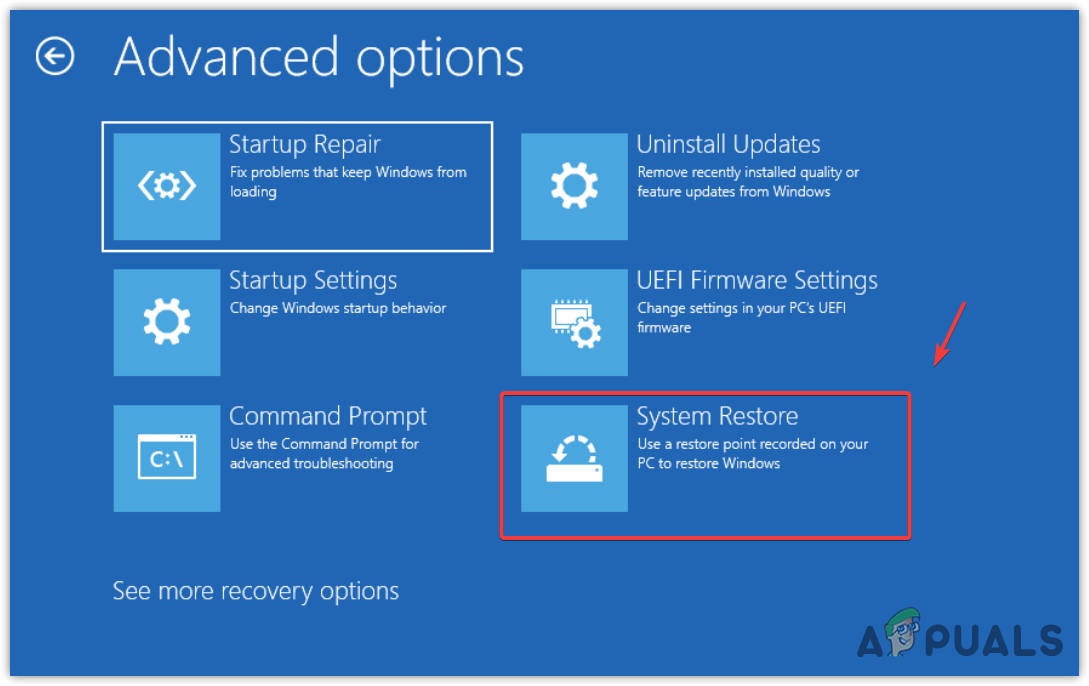
- Once finished, click “Next,” then select a restore point, and click “Next” again.
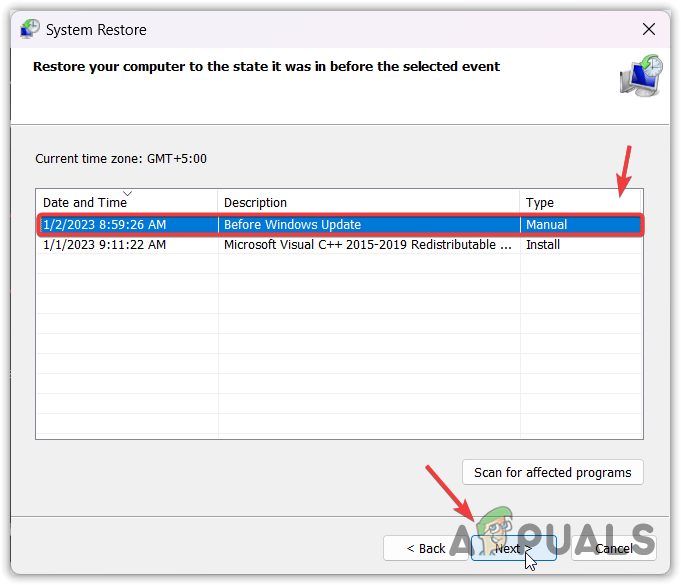 Note: If it says no restore points have been created on your computer’s system drive, skip this method.
Note: If it says no restore points have been created on your computer’s system drive, skip this method. - Finally, click Finish to restore your Windows.
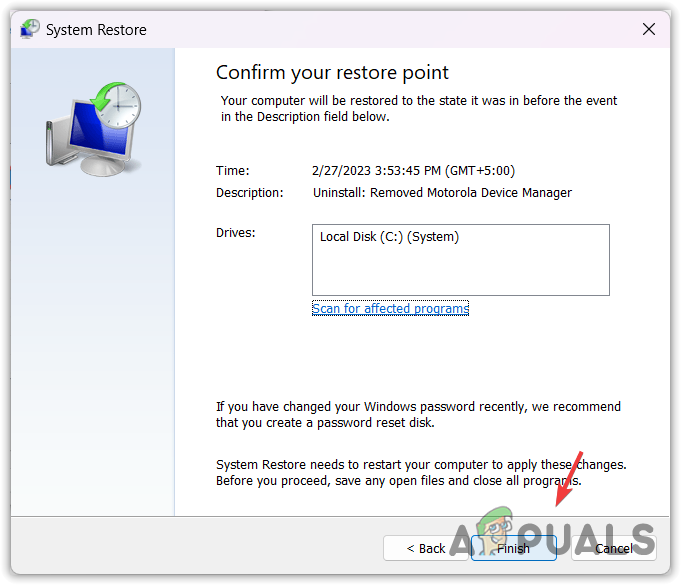
- Once completed, your issue should now be fixed.
7. Reset your system.
If you do not have a restore point created, in this case, the final solution we can try is resetting Windows without losing data. Resetting Windows will recreate all the system files, just like reinstalling Windows. You will not lose data such as images and documents saved on the system drive. However, you will have to reinstall applications and drivers.
- To reset your system, access the Windows Recovery Environment. To do that, simply press Ctrl + Alt + Delete and then click the Power option.
- Hold Shift and click Restart.
- Now select Troubleshoot > Reset this PC.

- Select Keep my files if you want to keep your files. Otherwise, select Remove everything.
- Then, select Local reinstall and click Reset to reset your Windows.
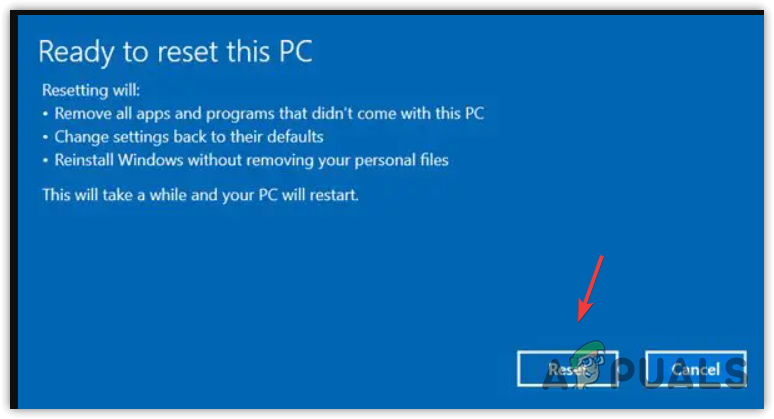
- Once completed, your issue should now be resolved.
- Please Wait for the GPSVC FAQs
Please Wait for the GPSVC means that GPSVC, also known as Group Policy Client, is not responding for some reason. This mainly happens when the GPSVC.DLL file gets corrupted or misplaced.
To fix this error, force restart your system. For that, just hold the power button till the system turns off. Once it is turned off, wait for some seconds and press the power button again to open your computer.


